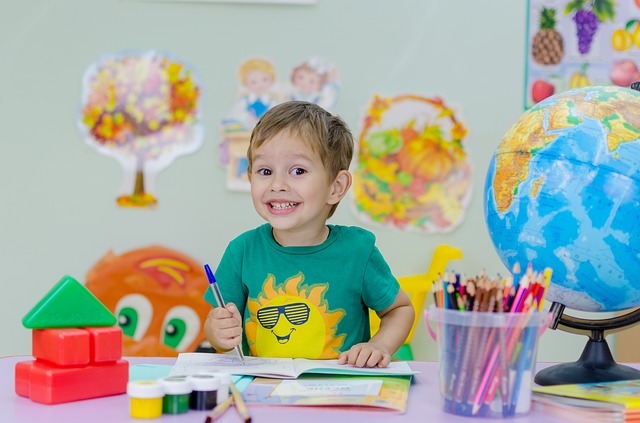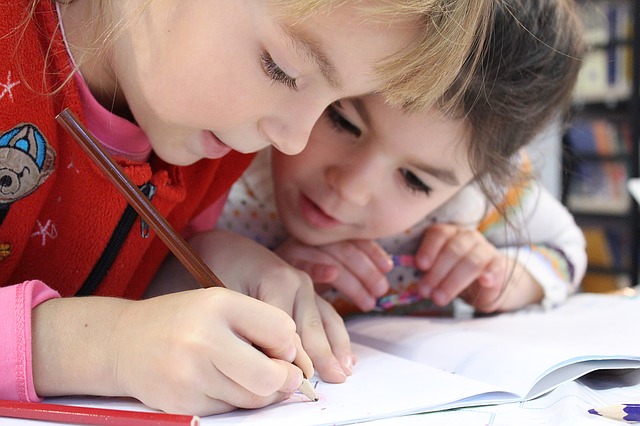Do you dream of your baby being able to: Switch spontaneously between two or more languages? Able to converse effortlessly with people of different nationalities? Having the option of being able to attend a university course that is conducted entirely in English? Of having the chance of working in a multinational company, or even abroad?
Having a second (or third) language certainly opens doors, but when should you start leading your youngster down this road? Isn’t there a risk that you might end up confusing a young child who is still learning their first language?
Most of us know someone who has a nonna or zia who speaks dialect, and yet the grandchildren are still able to comprehend her and communicate. We wouldn’t dream of keeping nonna away from her grandchildren just because she doesn’t speak perfect Italian! This ability to flip between languages is called ‘code switching’, and bilingual speakers are able to code-switch without even realizing that they are doing it. However, this ability gets more difficult to learn as we get older, so the younger we can start, the easier this process will be.
It is widely agreed that the younger a child starts to learn a second language, the better their pronunciation. A newborn baby has the potential to learn any of the 800 or so sounds that make up all languages on the planet – they have the capacity to learn any language they are exposed to. However, this capacity has a limited time-frame, sometimes known as the ‘critical period’, and from the age of about 5 or 6 years old the aptitude to acquire native-level pronunciation in a language starts reducing dramatically. Evidence suggests that we may never be able to become perfectly bilingual if we start learning the second language after the onset of puberty.
There are many benefits of starting to learn a second language as early as possible. During this critical period the human brain is specifically sensitive to linguistic input, including grammar. After this window has closed, it is assumed that grammatical rules have to be taught explicitly and become more difficult to internalize.

Furthermore, studies by Harvard University confirm that the creativity, critical thinking skills, and flexibility of the mind are significantly enhanced if children learn a second language at a younger age. Preschool years, especially the first three years, are believed to be a vital period in a child’s life. This is when the foundations for attitudes, thinking, and learning, among others, are laid down.
It is now understood that the constant need to shift between languages leads to several cognitive advantages. 1) Research has found that bilingual adults and children show an improved executive functioning of the brain – that is, they are able to shift attention, switch between tasks and solve problems more easily. 2) Bilinguals have also been found to have increased metalinguistic skills (the ability to think about language per se, and understand how it works). 3) There is evidence that being bilingual makes the learning of a third language easier. 4) Further, the accumulating effect of dual language experience is thought to translate into protective effects against cognitive decline with aging and the onset of Alzheimer’s disease.
That all sounds very positive, but is it risky for your child to start learning a second language too young? In some countries of the world they even start exposing unborn babies to different languages in utero by talking to the child through the pregnant mother’s stomach. You won’t be surprised to hear that this practice is popular in regions of the world such as Scandinavia, where English is widely spoken and many people are proficient in two or three languages. Of course there are many other societal factors involved and the level of proficiency cannot only be the result of this practice in isolation, and yet it is undeniable that they are doing something right!
Won’t this create confusion? Inevitably there will be gaps in the lexical knowledge of youngsters and it is perfectly normal for a toddler to insert a word from one language into a sentence that started in the other language. For example, ‘Can I have a gelato?’. This is nothing to worry about and is a natural part of the acquisition process. Given time and patience, children are able to learn to distinguish between the two languages for themselves. What is important is that they feel sufficiently confident and supported to experiment with the languages and make mistakes.

The process of acquiring a language is stress-free at such a young age. Do you remember how you learnt your own native language? I can bet that it wasn’t by sitting down and learning grammar rules off-by-heart! For all children, but particularly young children, learning through play is essential. A professional teacher will be able to guide your child through games, songs and activities to cover the necessary language points, but more than that they will do it in a logical sequence in order to place the building blocks of the new language so that they fit together correctly and in a way that your child can understand and remember.
The process of becoming proficient in a second language inevitably takes time – this is not something you can do in the blink of an eye. So, if you are serious about supporting your baby’s future, want to maximize the university options, increase the possibility of working for a multinational … there is no time like the present to get started!
Sources
www.mother.ly
www.brainscape.com
www.theindependent.co.uk
www.theconversation.com

ih Victoria
International House
Ancona|Jesi
Tel/Fax: (+39) 071 2867491
Tel/Fax: (+39) 0731 648 328
e-mail: info@ihtvc.it

